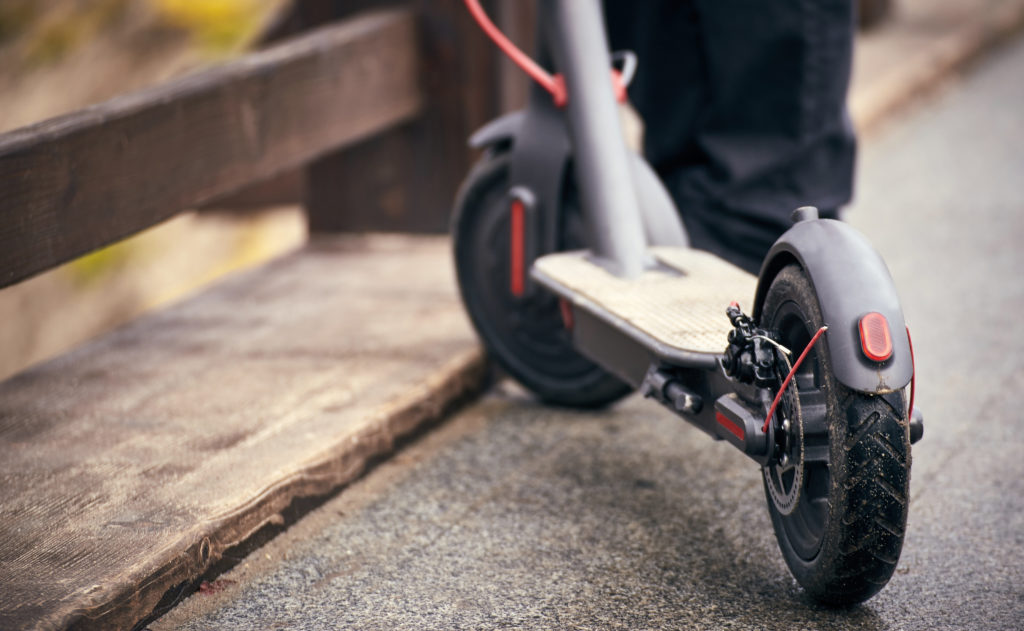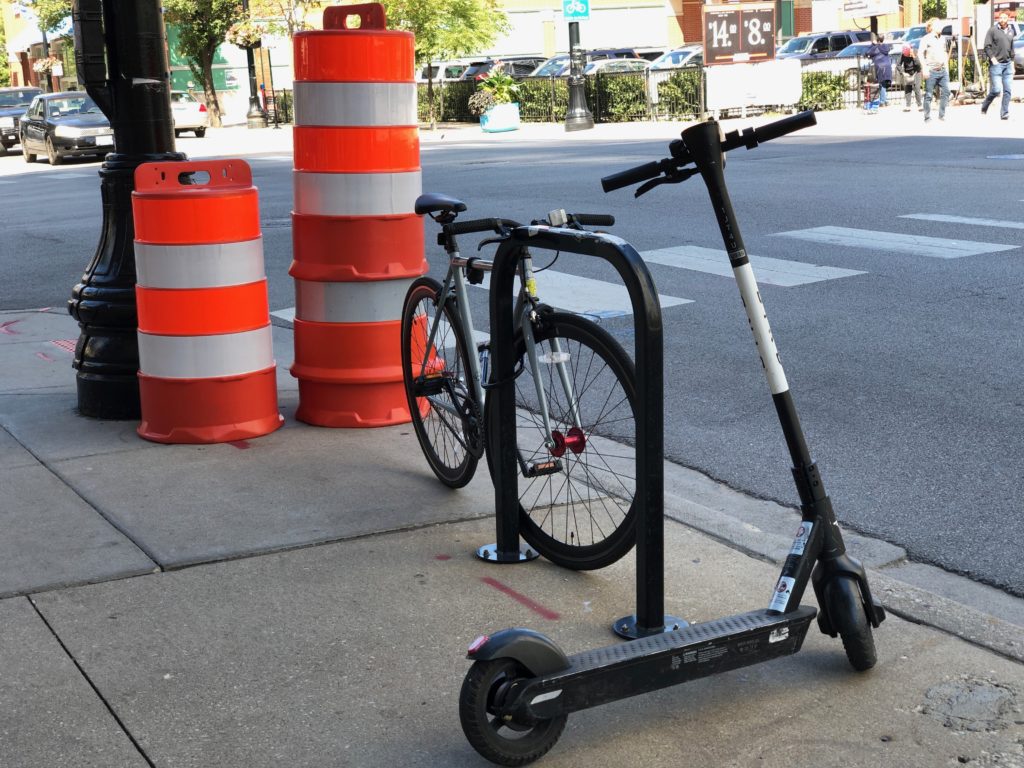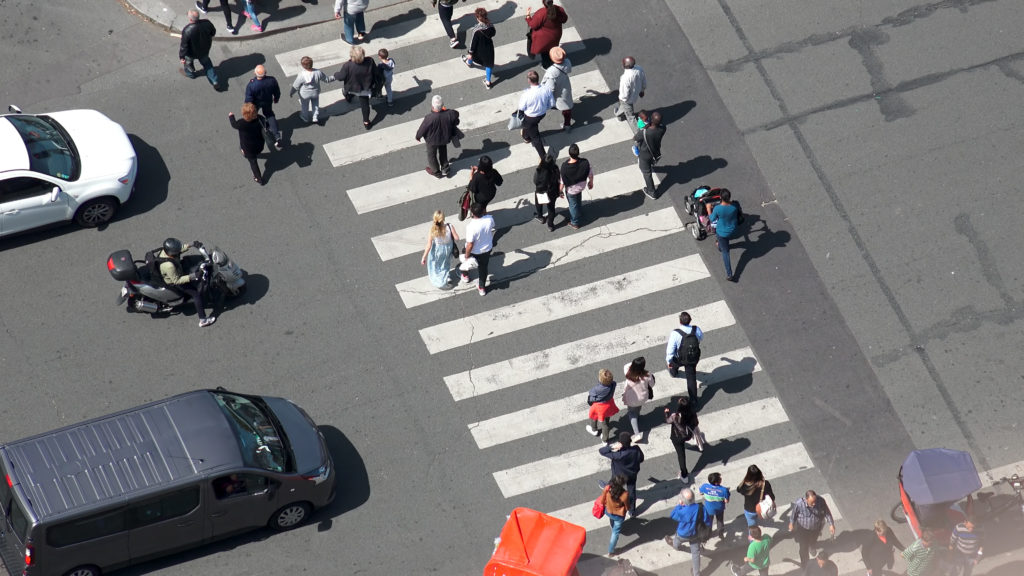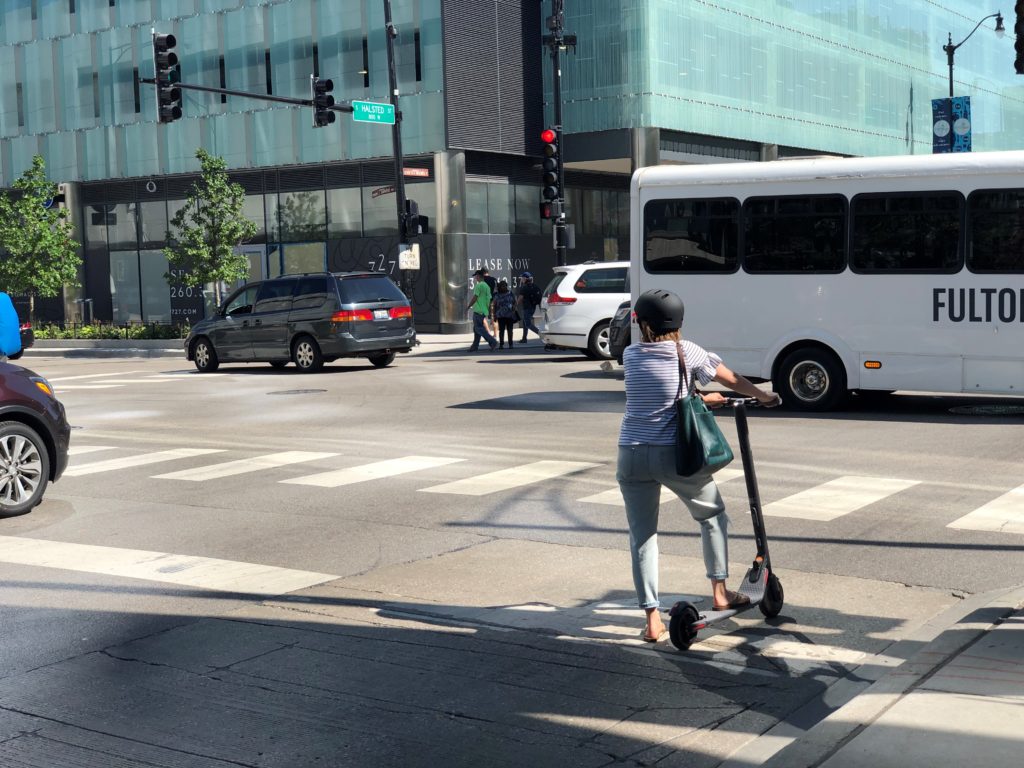
After a widely covered 4-month test run of Chicago’s pilot scooter program, the city has officially announced that the controversial and efficient scooters will be returning at some point in 2020. The second pilot, which has yet to be given a start date, will certainly bring about more polarizing opinions regarding whether this new transit method should stay for good or officially be banned by the city. As we have written in the past, the lack of regulations for these scooters render those who use them incredibly vulnerable. Coupled with the fact that most often these scooters are being used in bicycle lanes, this not only places the riders at risk, but it places bicyclists in harm’s way as these scooters can ride up to 15mph in the city.
After the initial 2019 pilot program ended in October of 2019, the Transportation and Business Affairs and Consumer Protection departments of the City released a report establishing that during the length of the pilot program there were 821,615 trips logged on the scooters. Of that large number of rides, 192 injuries requiring trips to the hospital were reported. After seeing this disparity, you may believe that the numbers are far too low for people to be skeptical of adopting scooters in the city. Afterall, over 821,000 rides is significant for a 4-month pilot program. However, those numbers must not deceive us. By the city adopting another method of transportation and allowing for it to take place without any strict rules or regulations, it places Chicago residents at a severe disadvantage and adds another dimension to what is already a fragile infrastructure that is growing denser. Included in the report released by the City was a survey that found that the most significant negative feedback centered around both safety and parking, and for good reason. True, these scooters offer an efficient and individual commuting experience that many who aren’t willing to ride a bike to work or school can easily get on board with. But at what cost? Why risk putting yourself in danger when the city has yet to establish any real safeguards?
This argument does not serve the function of holding that the scooters should be completely banned. Chicago faces a real issue when it comes to traffic congestion and as we all know, traffic congestion raises the cost of maintenance on vehicles, but also increases the likelihood for situations that have dangerous ramifications. With that being said, scooters have proven, through the 2019 pilot run, that they serve a purpose. There is no denying that over 800,000 rides were logged in a 4-month period. As impressive as that number is, it simply cannot take away from the fact that nearly 200 riders were injured in those 4 months. There’s a reason cities are beginning to heavily regulate scooter use and many have issued temporary bans. Why regulate all other forms of transportation in Chicago and fail to adequately establish appropriate standards of care for scooters? The fact that they are relatively new should not be an excuse.
Turning towards the future, Curbed Chicago was able to obtain a statement from Stefan Shaffer, City Strategist for the Natural Resources Defense Council (NRDC), in which he stated “as Chicago wrestles with its response to traffic congestion, air pollution and climate change, the e-scooter pilot gave people a popular and low-cost option to ditch their cars, which should continue.” Further, Mr. Shaffer also went into detail in an article published by the NRDC in which the e-scooter program was again touted for the safety precautions the city took. “Before the program began in June, the City met with various community leaders, disability rights advocates, transportation groups and other stakeholders to ensure the scooter pilot would enhance mobility for residents. The City’s extensive regulations and preparedness for issues with the scooters ultimately contributed to the low number of incident reports and injuries over the 800,000 rides taken during the pilot.” For what it’s worth, Mr. Shaffer is not wrong, in fact it has been good to see that the scooters were implemented into the city and so many rides were taken. However, one cannot help but argue that when it came to city regulations and enforcement, the pilot program had plenty of areas to be addressed. Before we go “all-in” and hold that scooters deserve the same amount of space in public transit as bicycles, properly enforcing the abundant number of scooters left in the middle of sidewalks, riders taking scooters outside the appropriate zones, and use of scooters in streets, should be an absolute priority.
As a City, we should want a diverse experience for all residents and that includes transportation options that are affordable and convenient. However, even in instances where the City is “testing” whether to adopt certain approaches to alleviate traffic congestion, rider and pedestrian safety should remain the first priority and not be sidestepped because a new form of transit proved to be efficient. In fact, one should truly begin to ask questions about what happens when these scooters are present throughout the long winter months. No matter what, safety should remain at the forefront of the discussion.



